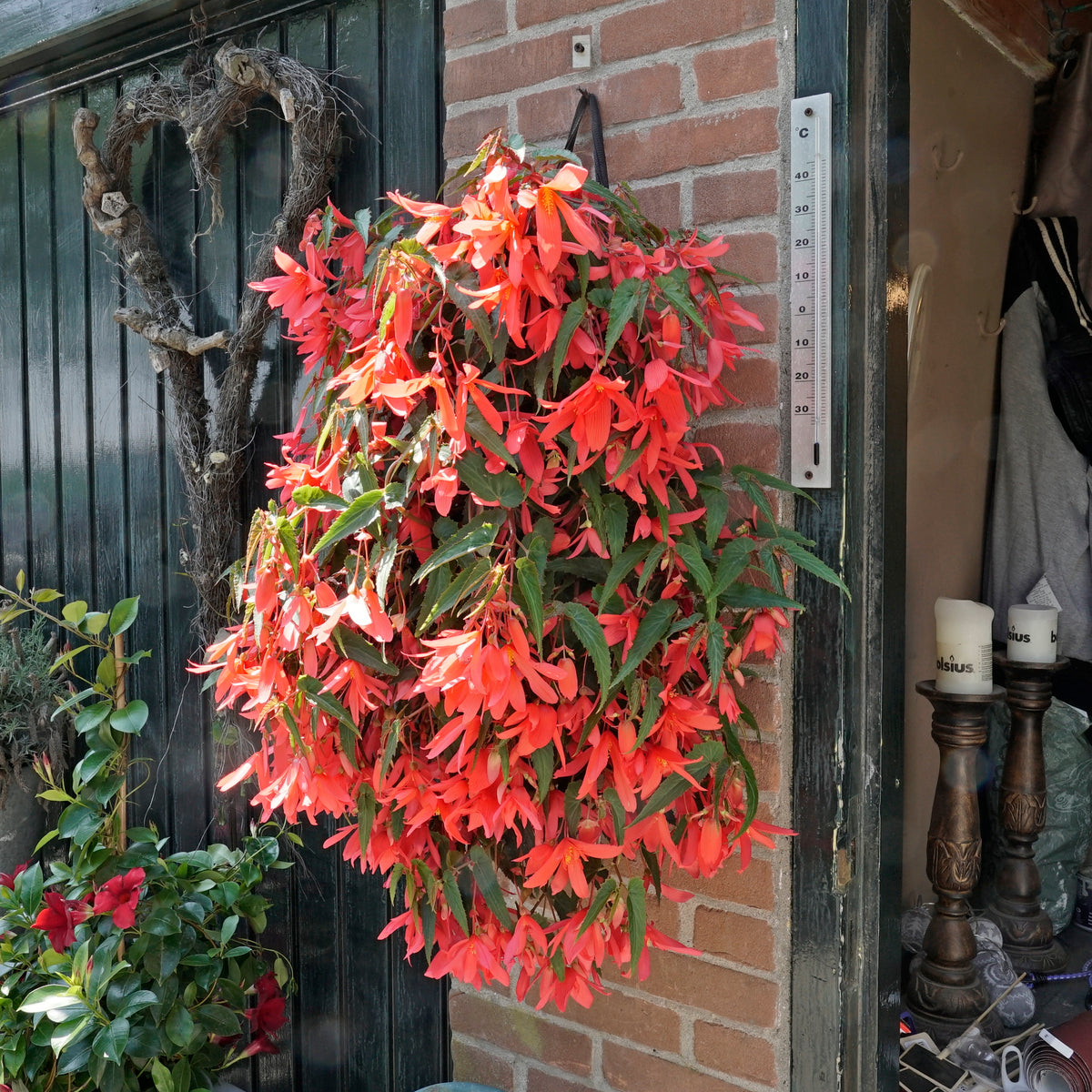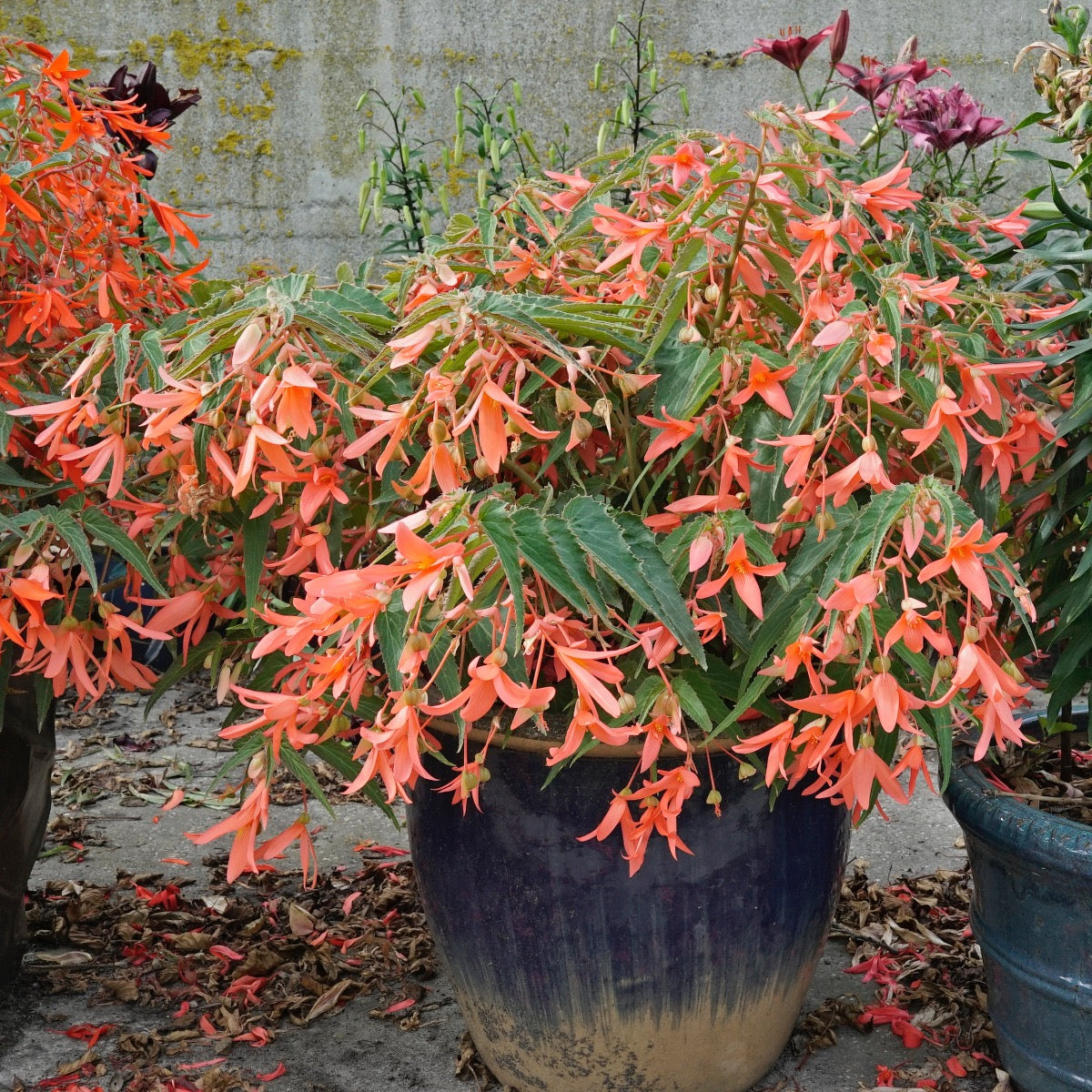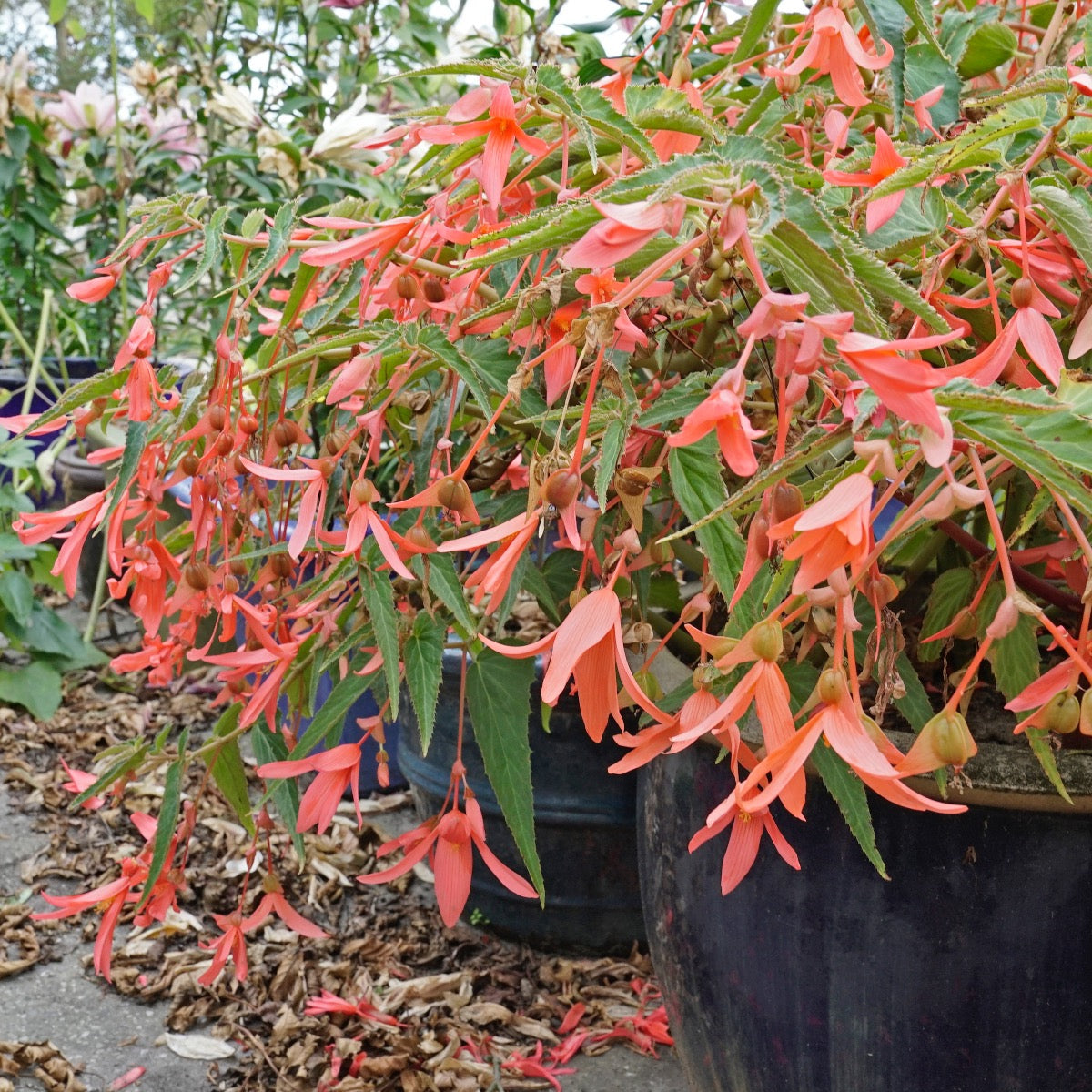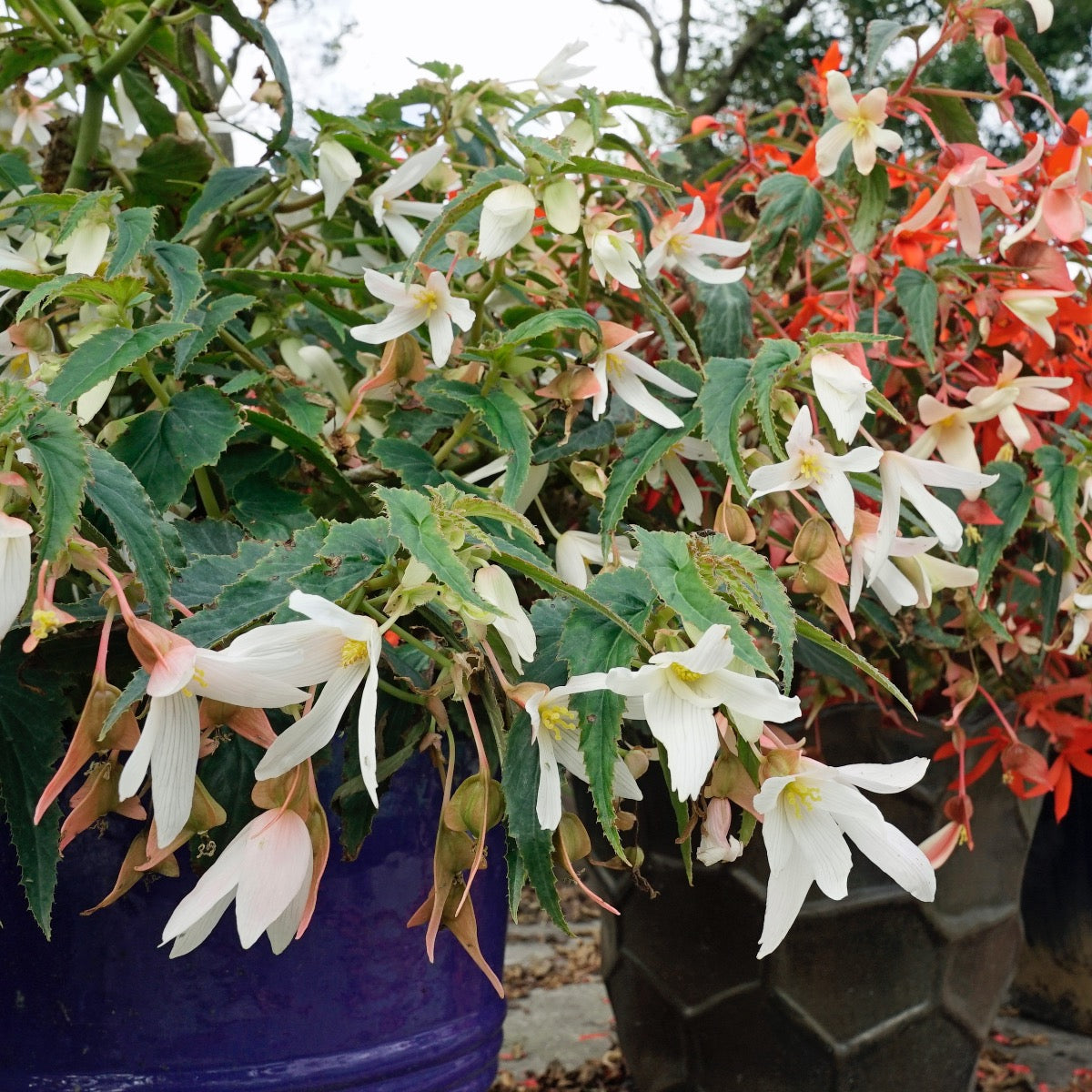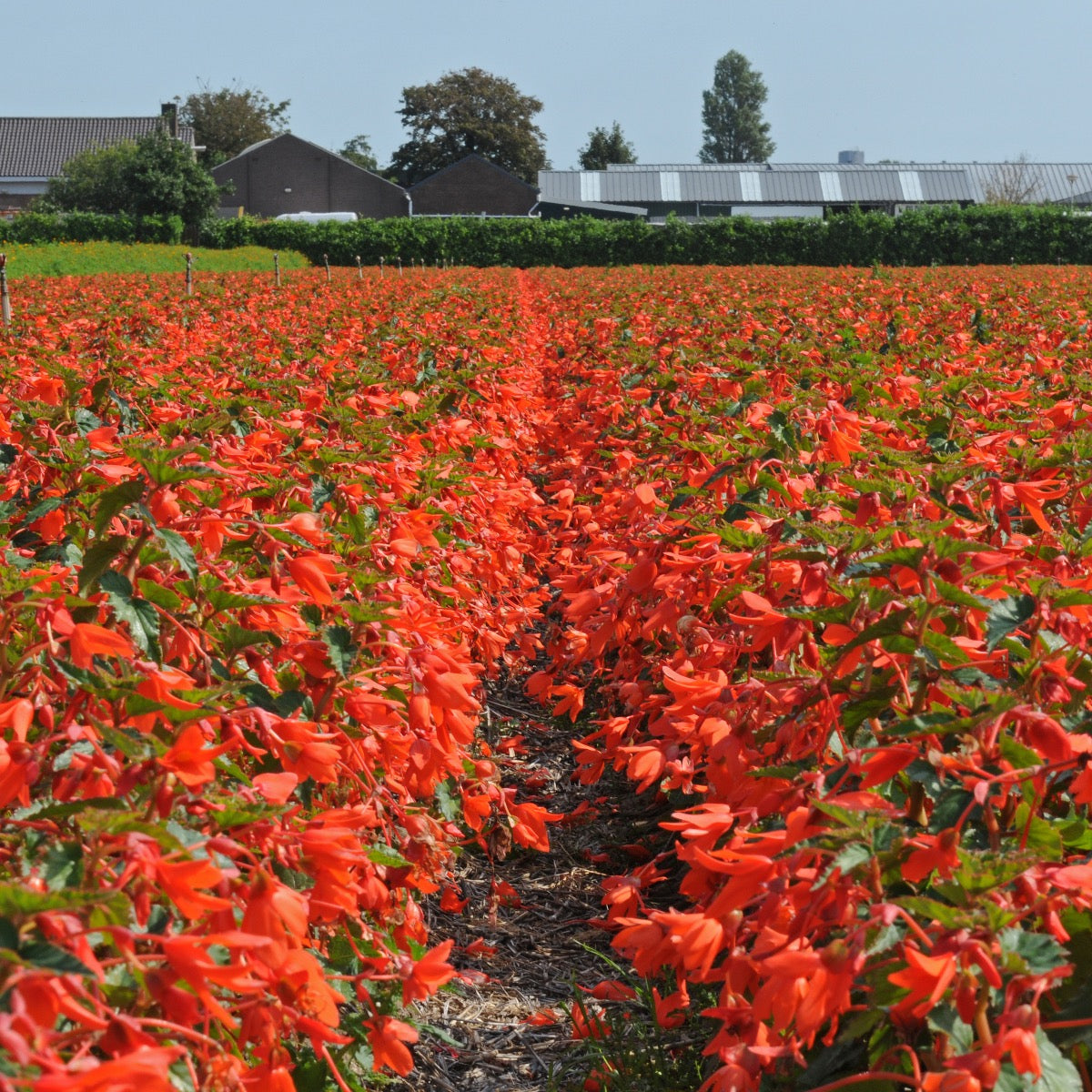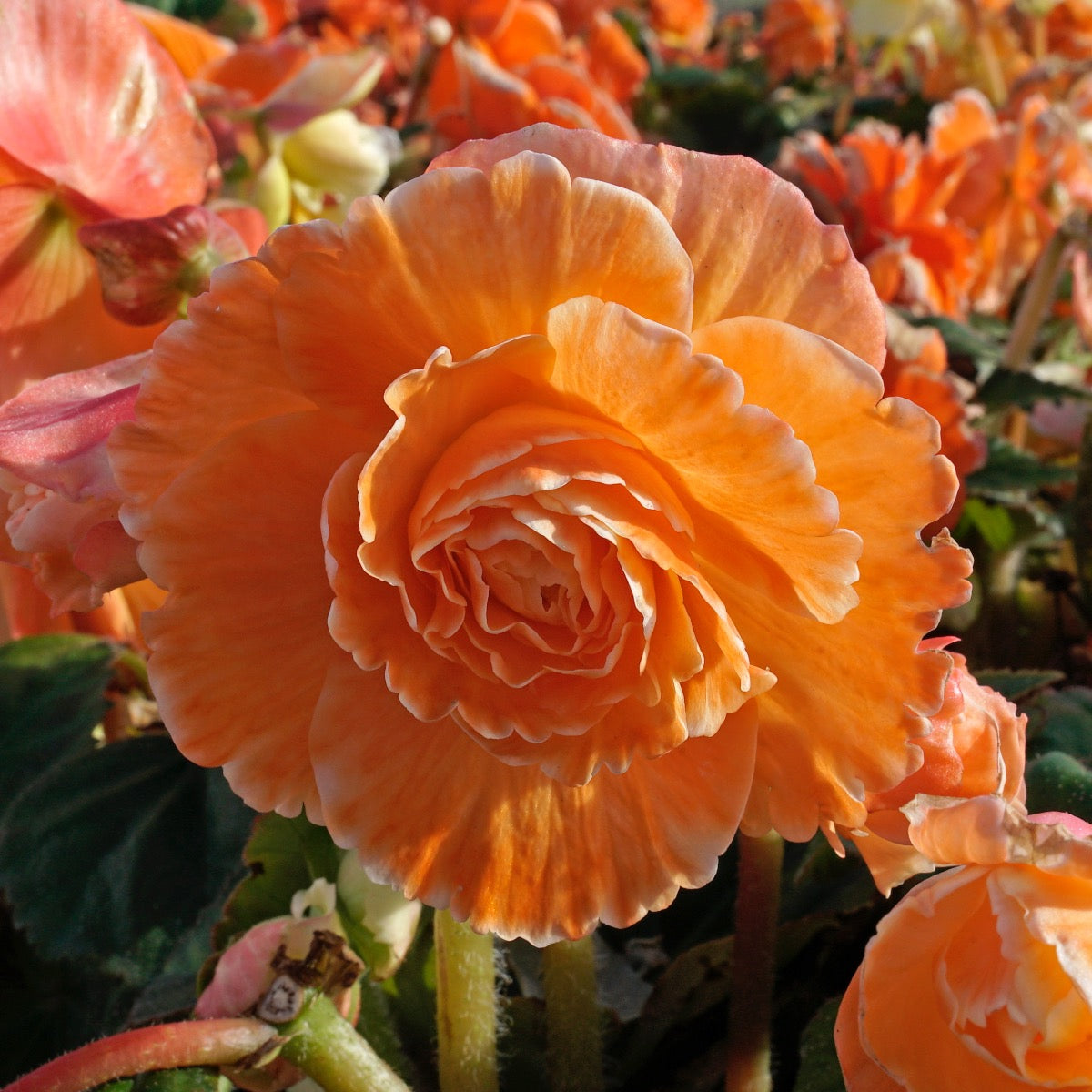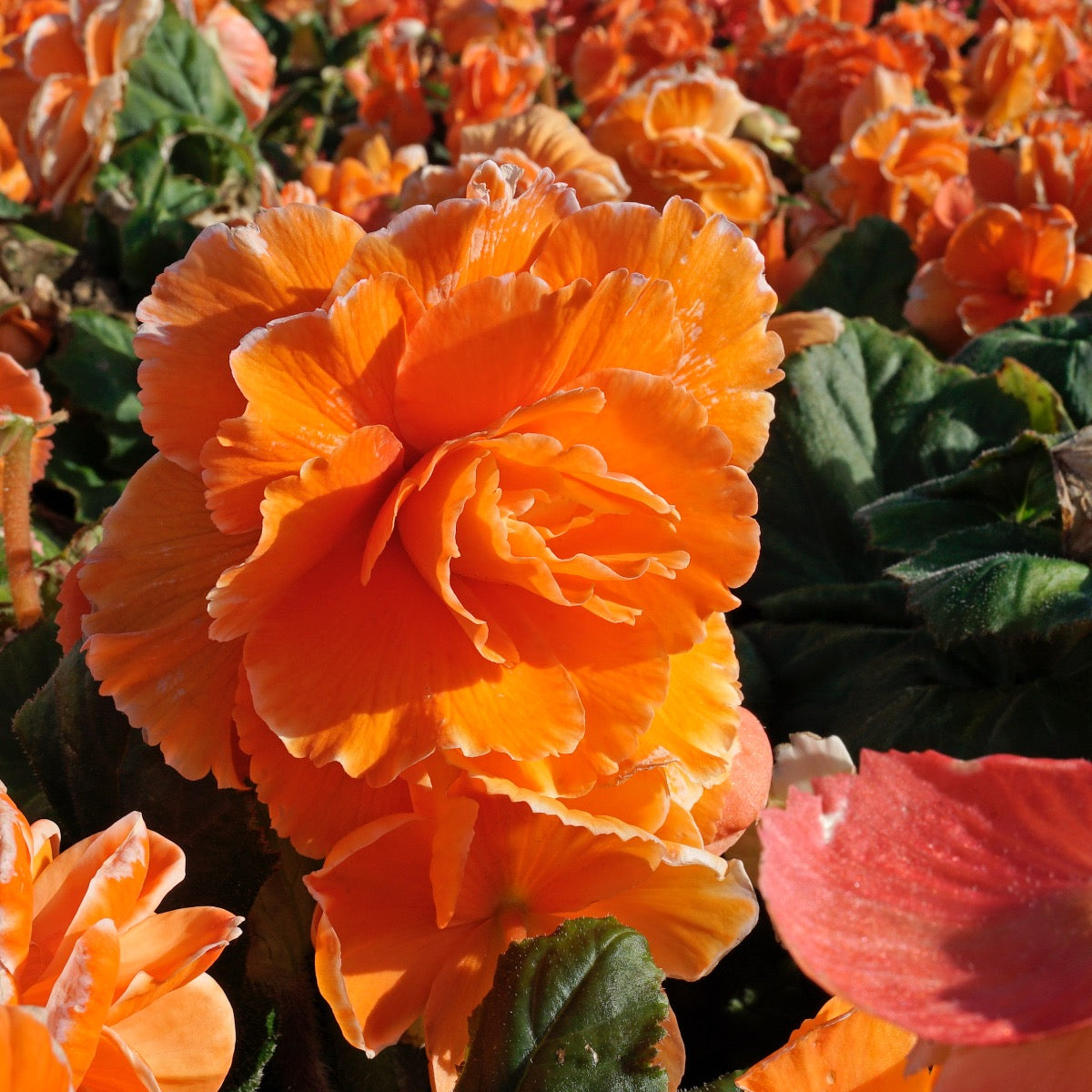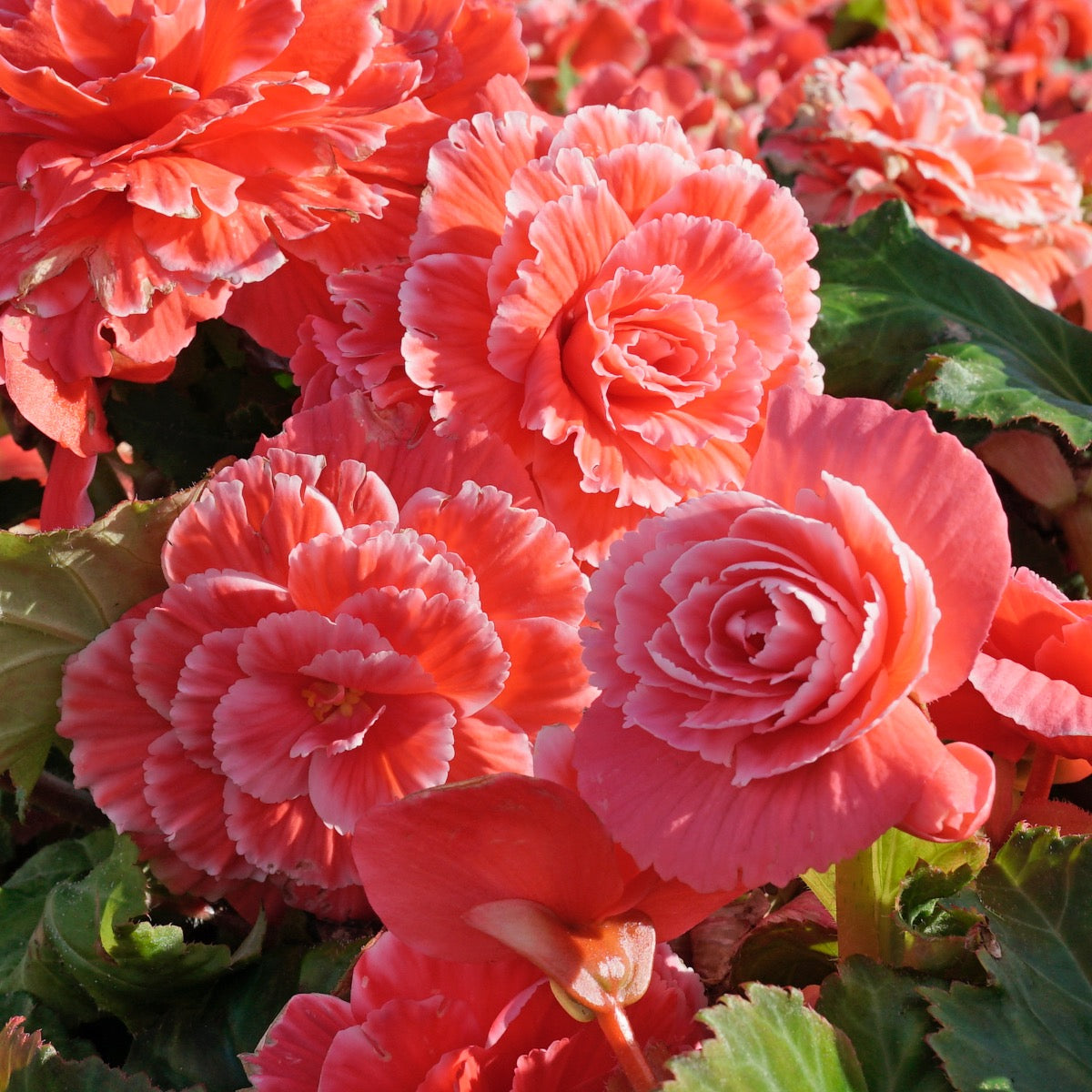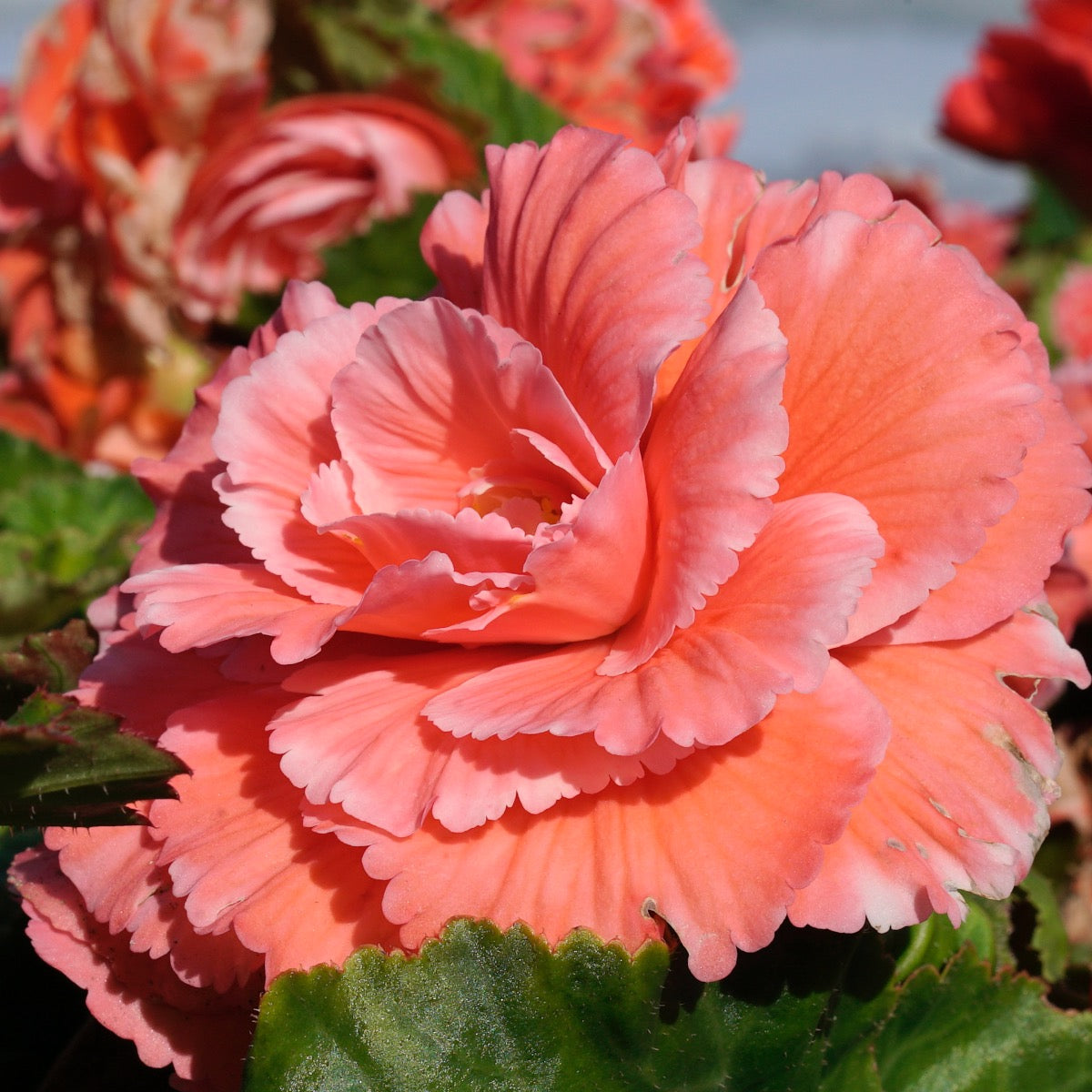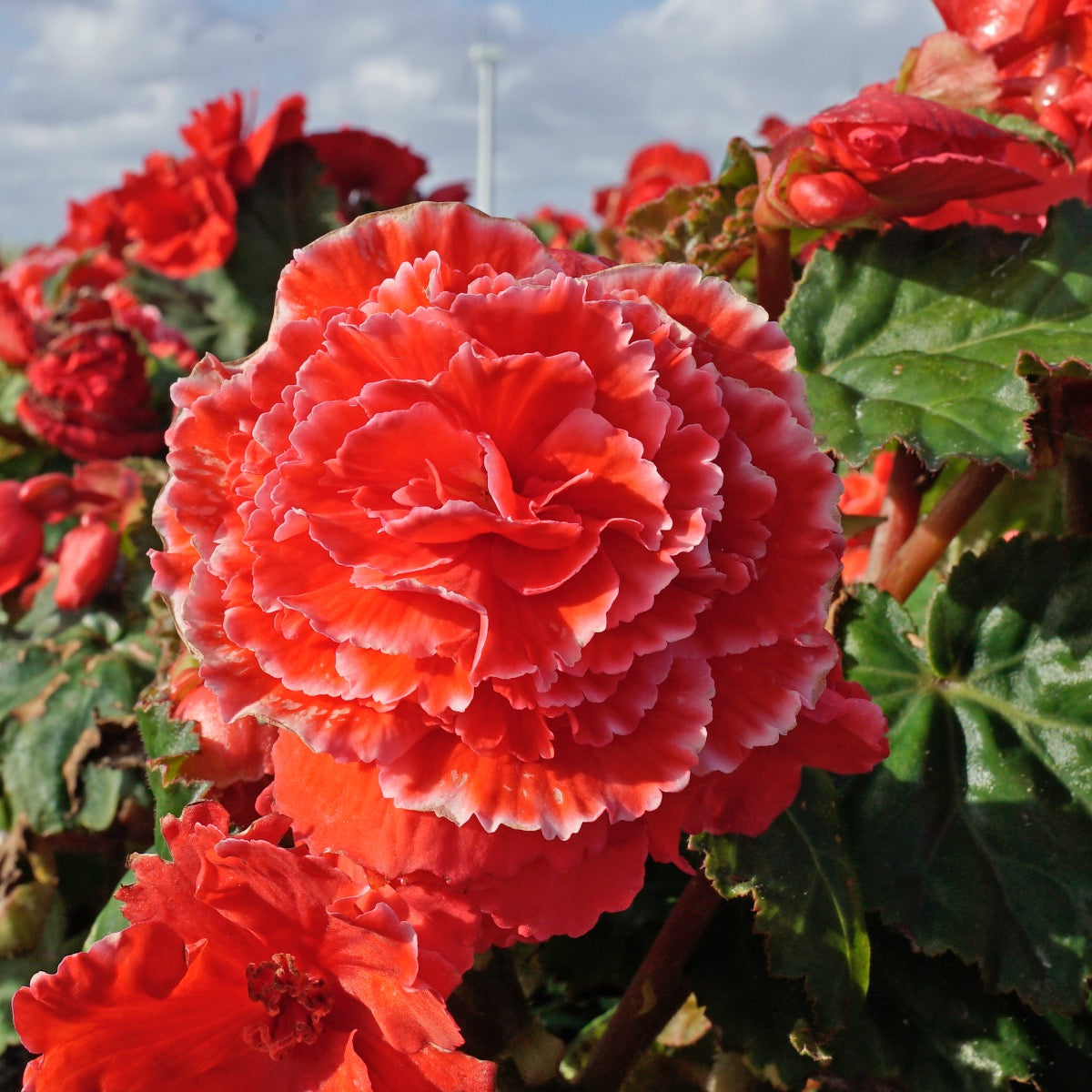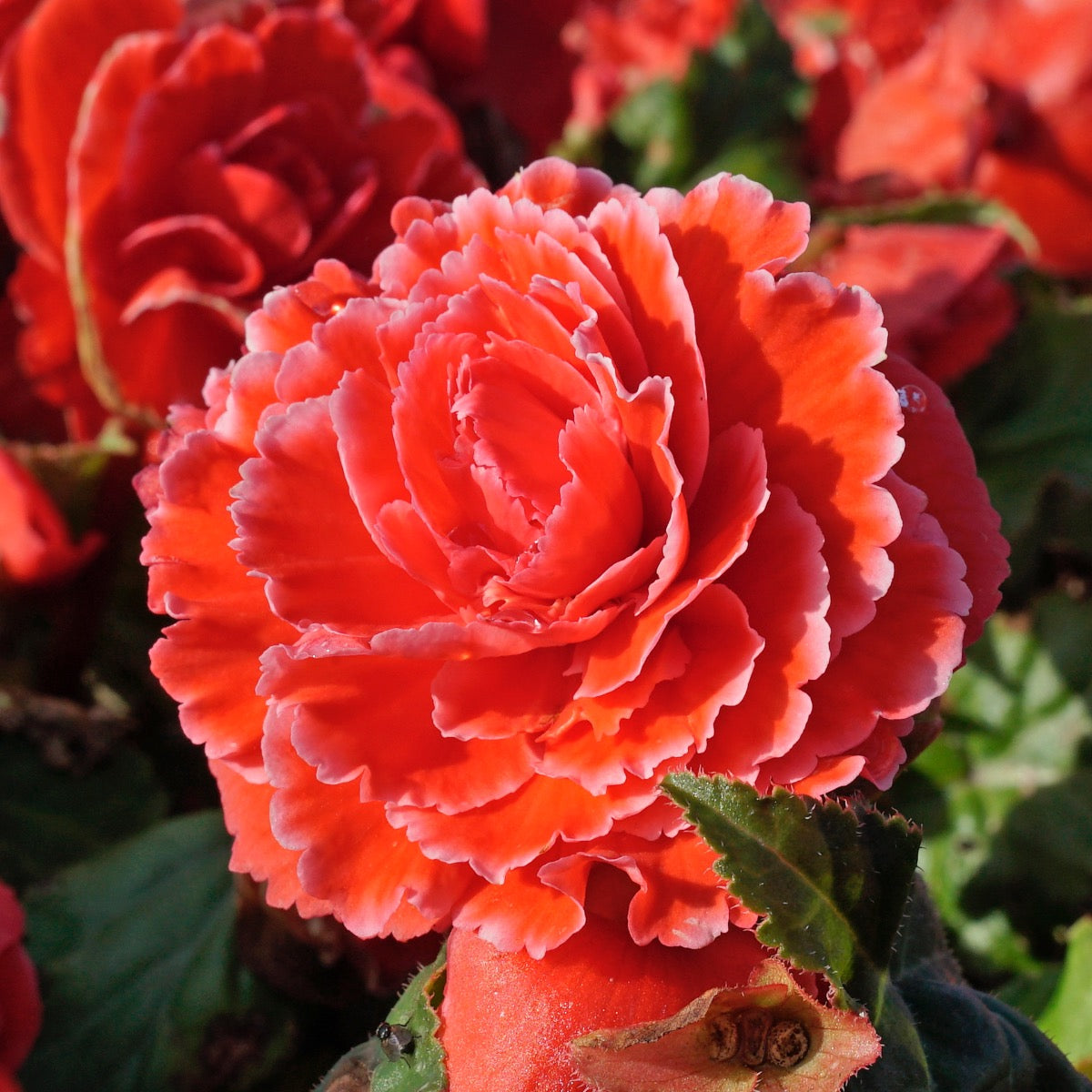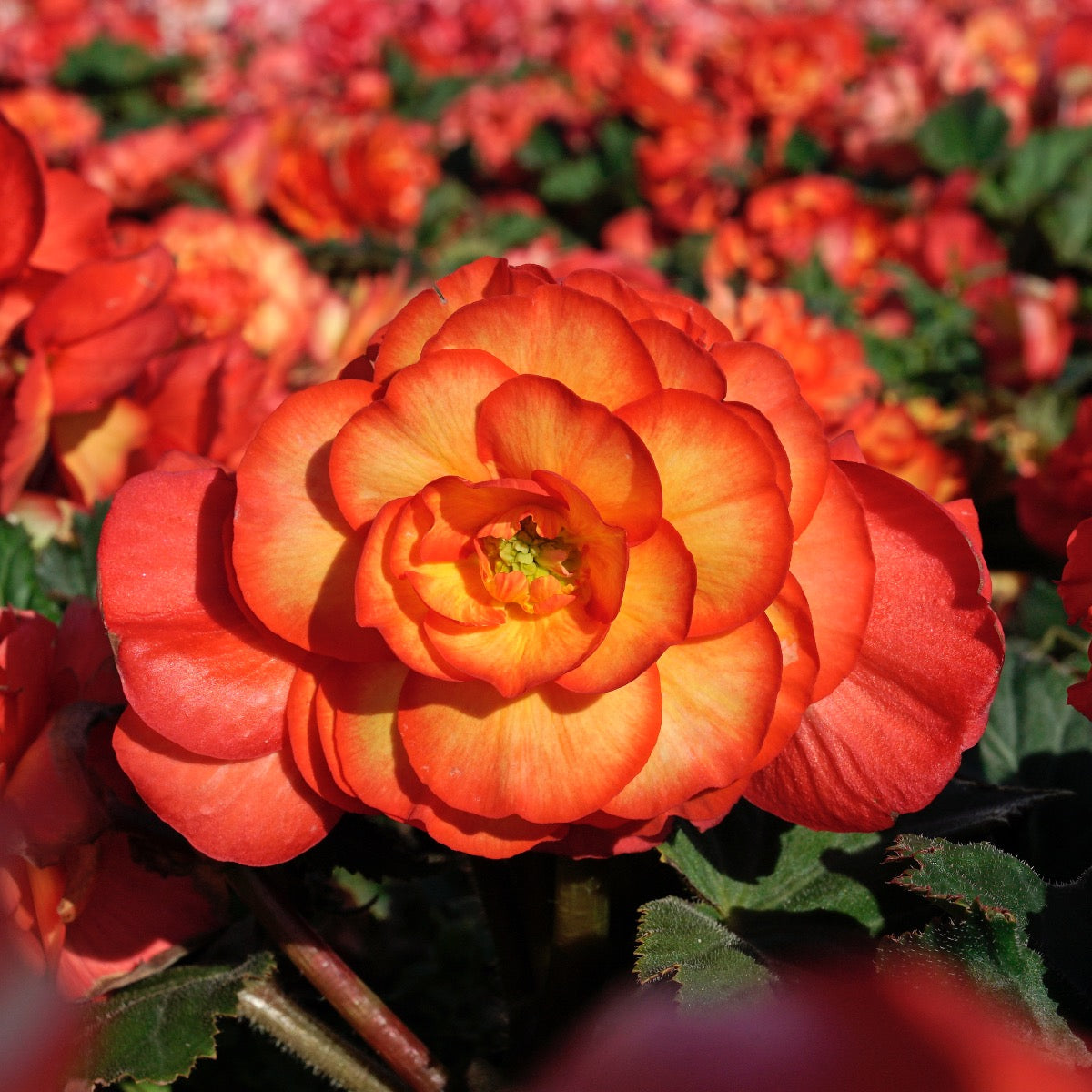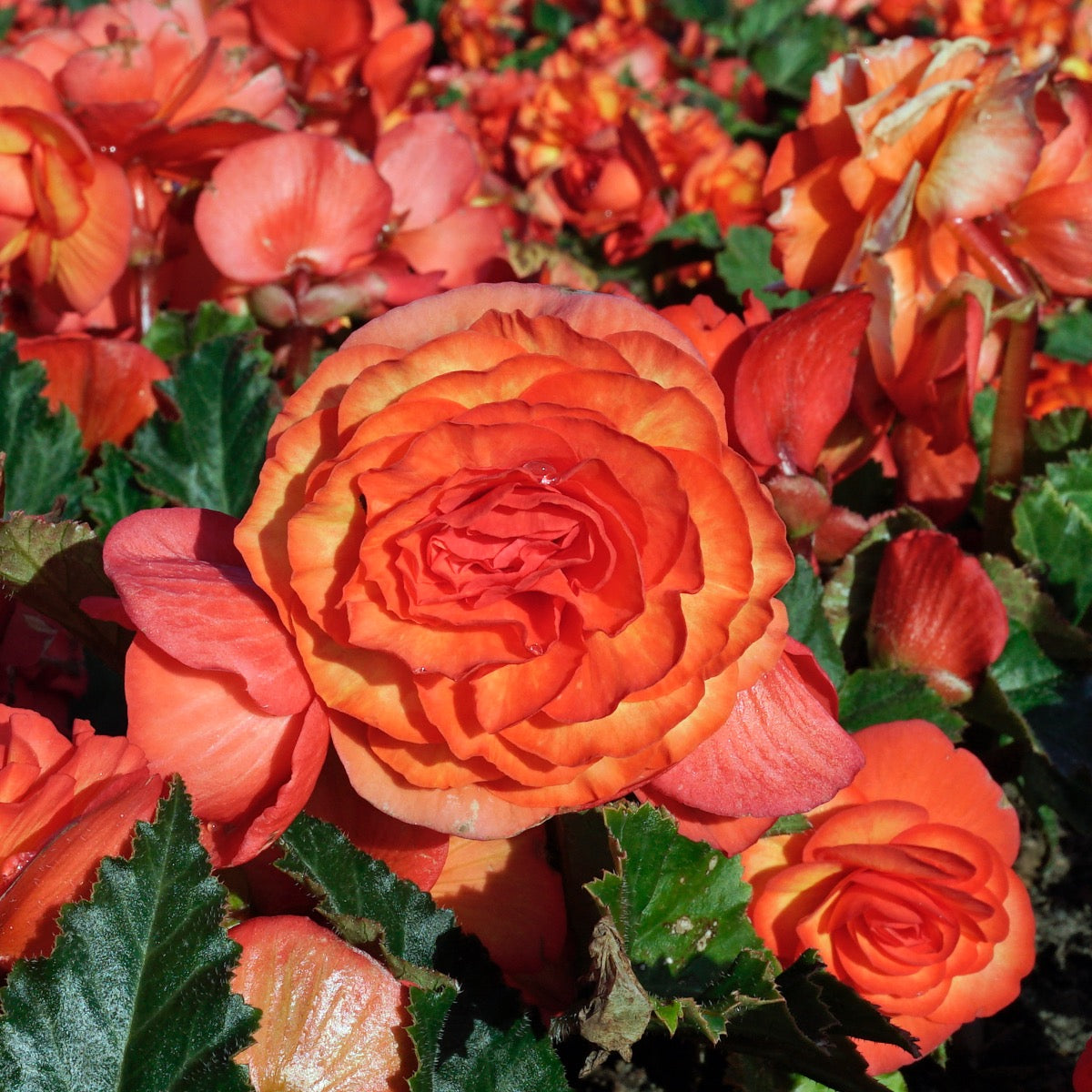
General Knowledge
The Tuber Begonia… back in style.

Our grandparents weren’t so crazy after all: Begonia’s are simply beautiful. Try finding another flower that grows as grand and colourful as the Begonia. Luckily, more and more garden enthusiasts rediscover the Tuber Begonia and she is used again. We do not only see her as a potted flower, but also in borders and parks. The Begonia almost always steals the show with her colourful appearance and insanely long blooming period.
The Begonia’s come-back is mostly thanks to the Fa. A.F. Kolken & Zn from Dirkshorn in North Holland. After the growing of Begonias had almost totally disappeared from the Netherlands and Belgium, they picked it back up. They found the best Begonias for gardens and balconies from all over the world and have a passion of promoting the Begonia business. Their searches have resulted in a fantastic assortment of strong, richly flowering tuber Begonia’s in all shapes and sizes.
The latest arrival in the Kolken’s collection are the so-called Ameri-hybrids. This is a series of Begonia specially selected by their good qualities for gardens and pots. These hybrids also have larger and more colourful flowers than the existing assortment. These Ameri-hybrids are also the Begonias we offer in our web shop and I recommend you to try them for yourself. I have seen a lot of different flowers, but these Ameri-hybrids have really managed to take me by surprise with their intense colours and large flowers. And it gets even better: it is also surprisingly easy to het them to flower!
The Begonia Tuber
The Begonia Tuber certainly is not prized for its beauty: it looks a mess. A hairy, unshaven piece of stubbled tuber of which you cannot see what is the frontside and what is the backside. Therefore, you have to pay attention when planting them, because the flower certainly has an upper- and a lower half. Almost always, you can see a hollow side on the Begonia. This is the upper side and has to be faced upwards when planted. If you wait a little while before planting, it gets easier to tell which side is hollow, because in the little hole the first red-coloured growths will appear.
If you look closely, you will almost always be able to tell which side is the hollow one, but if you are in doubt it is best to plant your Begonia on her side. This is not ideal, but it is preferable to planting her upside down.
Planting Begonia
The Begonia is planted with the hollow side faced upwards. It is planted shallow in the ground: you only need a thin layer of soil on top of the tuber. 2 centimeters is enough. When planting the Begonia in a border, keep a distance of 25 to 30 centimeters in between. Make sure that the soil is kept moist during the growing period of your Begonia. A Begonia does not produce any deep roots like many other plants do, which is why she needs the soil around her to be kept moist.
When planting your Begonia in a pot, use 2 centimeters of soil on top of the tuber. Do not use a small pot, as a grown Begonia is quite a large plant that requires a lot of water. By using a larger pot, you create a buffer in the amount of water, and therefore you reduce the chance of the Begonia drying out.
Letting your Begonia flower early
Real Begonia lovers will almost always opt to have their Begonia’s flower early. With this they mean that the growing is started earlier than normal, which causes the Begonia’s to flower earlier in the season. You can do this by planting your Begonia’s in March. Plant them in pots with using soil, and place them in a light, slightly warm area like in a greenhouse, conservatory or on the windowsill. As soon as the risk of night frost is over, take them out of the pot and plant them in the garden. If you wish to keep your Begonia’s potted, make sure to plant them in the right pot straight away. This way of making the Begonia flower early is the same as with Dahlia’s.
Potted Begonia’s
If you are looking for a colourful plant for your terrace, balcony or patio, the Begonia is the ideal choice. There is simply nothing more beautiful than a potted Begonia: attractive, decorative shiny leafs with a gorgeous, colourful blob of flowers that remain in bloom for a long period of time, in the most bright and beautiful way imaginable. Every flower in itself only flowers for a few weeks, but the Begonia keeps producing new flowers until the weather gets too cold and too dark. When you plant a Begonia in a pot, make sure the pot is large enough, as the plant needs a lot of water. A larger pot will provide enough water for this beautiful plant, and it will mean that you do not have to water it as much. Make sure you do not fill the pot with soil completely: leave a centimeter to the edge to make watering easier.
Placing the Begonia
There is a lot of fake news regarding the Begonia. I have seen people on the internet claim that the Begonia cannot handle bright sunlight, but that is not quite true. This only goes for a certain part of the Begonia family: there are a lot of them that prefer shadow. The Begonia’s we offer, the Ameri-hybrids, do like the sun. Ameri-hybrids are happy when they are in a sunny area: they can even hold up just fine during the hottest time of the day. These Begonias grow better when they get a lot of light and warmth. It will make them flower even more beautiful.
The same goes for humidity. It is often said that the air needs to be humid for a Begonia to flower. The Begonias we offer in the Fluwel web shop were chosen for their good qualities. They were selected to perform well in European surroundings. To make your Begonia flower in the best way possible, make sure to plant it in a sunny, bright spot in your garden. The Begonia will do okay in the shadow, but to really make her shine she needs a lot of light.
Soil Type and Care
The tuber Begonia loves a nutritious soil which contains a lot of organic material and with good water management. A fully grown Begonia tuber is a thirsty plant: she does not produce any deep roots, so she needs to get all her water from the surface. Therefore, make sure to keep the soil moisturized. Especially when in full bloom, the Begonia tends to dry out quickly. Keep an eye on your Begonia’s water level if you choose to plant her in a pot.
In a good, nutritious soil, the Begonia does not really need extra fertilizer. When you doubt the health of your Begonia because the leafs seem too pale or she just does not look fresh, you can always give her a little bit of extra food with dried manure.
Digging and storing Begonia
The tuber Begonia is a crop that can stay with you for many years. In order for this to happen, you do need to dig her every year, because hibernating in the type of climate we have in Europe is impossible for her. The Begonia tuber cannot handle frost, and besides our winters are too wet for her: the tuber will rot. When the leafs of the Begonia start to die, it is time for digging. The dying of the leafs will start to happen when the nights get colder. The Begonia tuber can easily endure just a few nights of frost, she is better at resisting cold than the Dahlia, but as soon as the frost reaches the tuber itself it will start to freeze.
When digging the Begonia, cut the stems off a few centimeters above the tuber. At a later stage, these pieces of stem will dry out and fall off the tuber by themselves. After digging the Begonia, carefully pat the extra soil off of the tubers. You do not need to clean the tuber completely. After that, store the tubers at a frost-free place, like you would do with your Dahlia’s. The tuber does not need to be wrapped up to prevent it from drying out. Keep her in an airy place, like a box or a crate, at a temperature between 5 and 10 degrees Celsius. Next March, the Begonia’s are ready to be planted in pots for early flowering, or wait until April or early May and plant them in the garden right away.
The Begonia Flower
A fun fact about the Begonia flower is that the male flower is always accompanied by two females. When you look at the plant closely, you will notice there are always three flowers on a stem. The middle one, usually the largest, is male. Next to it are two small, single flowers: these are the females.



 Deutsch
Deutsch English
English Nederlands
Nederlands